Discover the Beauty of Death Valley National Park Without Breaking a Sweat: The Best No-Hike Locations to Explore
Death Valley National Park is a breathtaking desert wonderland in Eastern California. With over three million acres of land, it is the largest national park in the contiguous United States.
Known for its striking landscapes, unique geological formations, and extreme weather conditions, Death Valley has become a favorite destination for hikers and outdoor enthusiasts. However, not everyone is keen on exploring the park’s rugged terrain by foot.
For those who prefer to take it easy, there are still plenty of options to enjoy the beauty of Death Valley without breaking a sweat. In this article, we’ll explore some of the best no-hike locations that offer just as much awe-inspiring scenery as the park’s famous hiking trails.
Mesquite Flat Sand Dunes
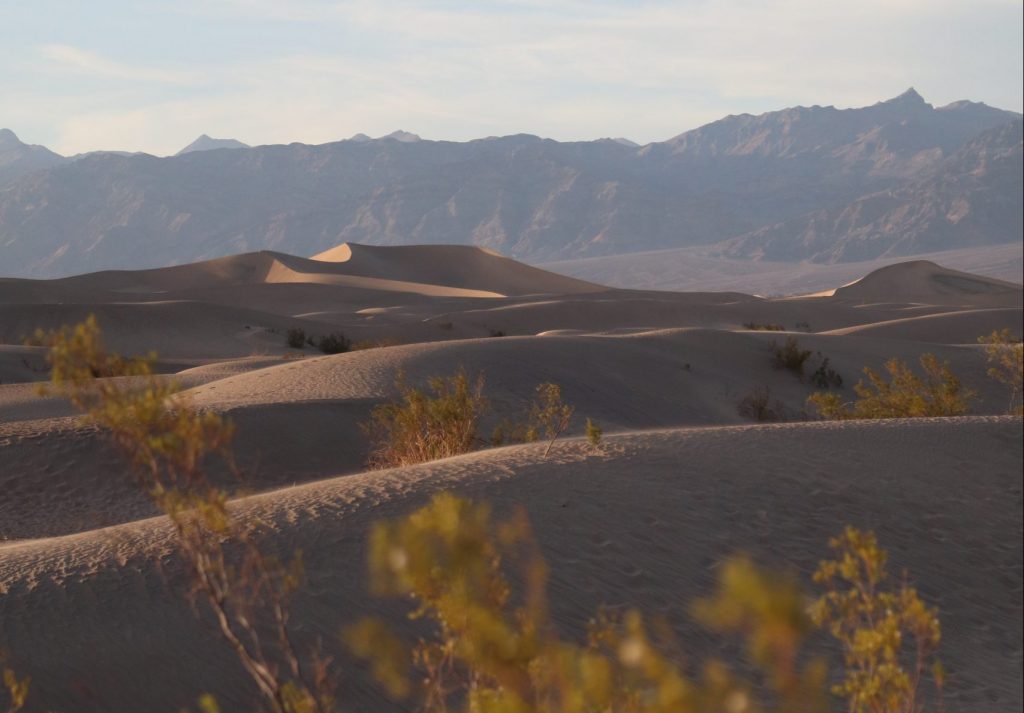
The Mesquite Flat Sand Dunes in Death Valley National Park are a wonder to behold. These massive mounds of sand stretch as far as the eye can see, creating a landscape that’s truly out-of-this-world.
The dunes themselves are made up of fine grains of sand, which swirl and shift with the wind to create ever-changing patterns that make for some truly stunning photo opportunities. One of the best things about Mesquite Flat Sand Dunes is how accessible they are.
Unlike some other areas of Death Valley, you don’t have to be an experienced hiker or climber to explore these dunes. In fact, you don’t even need any special equipment or gear – just a pair of sturdy shoes and maybe a hat and sunscreen if you’re visiting during the day.
Unique Features
Each individual dune at Mesquite Flat has its own unique personality, with distinctive ridges and curves that make them all stand out from one another. Some dunes are more massive than others, while some have sharp drop-offs at their peaks that create dramatic shadows as the sun sets over the park.
In addition to these natural features, there are also some interesting man-made structures around the Mesquite Flat area that offer additional photographic opportunities. For example, there’s an old abandoned car near one end of the dune field that makes for a great foreground element in photos.
Sandboarding and Stargazing
If you’re looking for some activities to do while exploring Mesquite Flat Sand Dunes beyond just taking pictures (though let’s be real – taking pictures is definitely one reason to visit!), there are two main options: sandboarding and stargazing. Sandboarding is exactly what it sounds like – it’s like snowboarding, but on sand instead of snow. You can rent a board from a shop in nearby Stovepipe Wells and try your hand at gliding down the dunes.
It’s definitely a thrill, though be prepared to do a lot of uphill hiking as well! For those who prefer something a little more low-key, stargazing at Mesquite Flat Sand Dunes is also highly recommended.
The park is known for its dark skies and lack of light pollution, which makes it an ideal spot for observing the stars. Bring a blanket or some chairs and settle in for an evening of cosmic wonder.
Badwater Basin
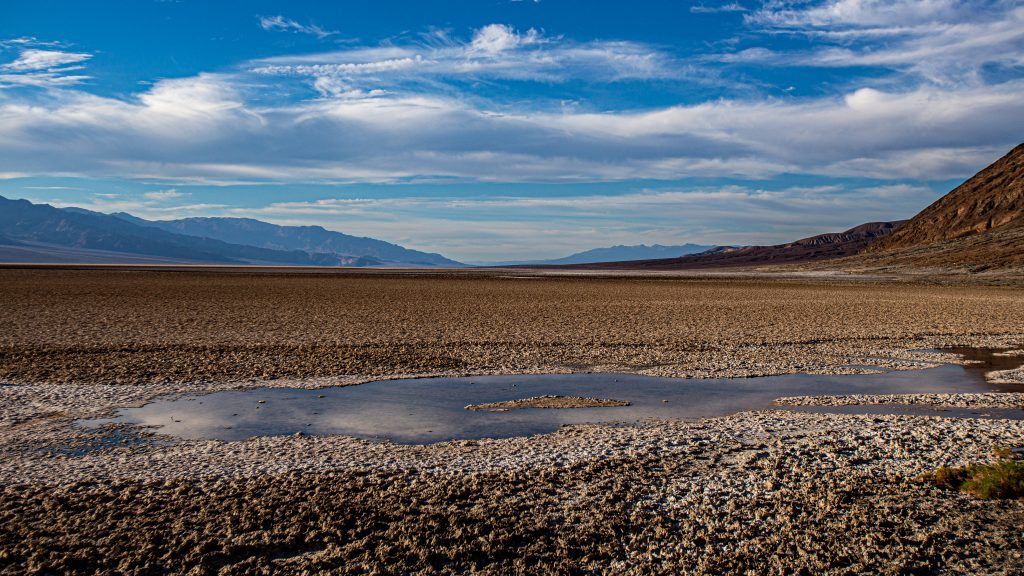
Death Valley National Park is home to some of the most unique landscapes in the world, and Badwater Basin is no exception. This vast expanse of salt flats, located at the lowest point in North America, is a spectacle that will take your breath away. The salt flats cover over 200 square miles and have been formed over millions of years by a combination of geologic processes.
But it’s not just their size and stunning appearance that make them worth visiting- they also hold significant historical value for Death Valley. The salt flats were named “Badwater” by early explorers who discovered a pool of water so salty that it was undrinkable, hence giving it the name “bad water.” However, despite its unwelcoming name, Badwater Basin has played an important role in Death Valley’s history.
In the late 1800s, borax mining became a significant industry in the area, with miners extracting borax from evaporated salt deposits at Badwater. Today, visitors can still see the remains of old mining equipment scattered across the salt flats.
Artist’s Palette Drive
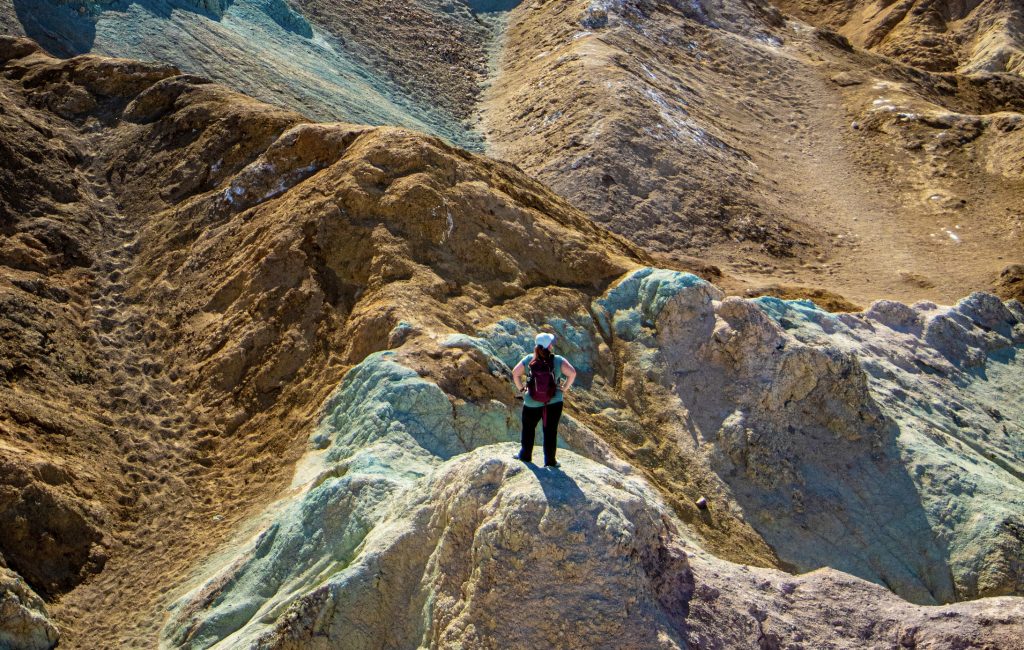
Are you looking for a breathtakingly beautiful drive that will take your breath away? Look no further than Artist’s Palette Drive in Death Valley National Park. This scenic drive is an absolute must-see for anyone who wants to experience the best of what this park has to offer without having to hike or walk too much.
The drive winds through a stunning landscape of colorful rock formations, showcasing the incredible geological history of the area. The colors range from deep reds and oranges to vibrant greens and blues, creating a stunning tapestry of natural beauty that will leave you speechless.
And the best part? You don’t have to get out of your car to experience it!
The Best Times to Visit
To truly make the most out of your Artist’s Palette Drive experience, it’s important to plan your visit for the right time. We recommend visiting during either spring or fall when temperatures are more moderate and the crowds are less intense. Summer is also an option but be prepared for extreme heat if you decide to go during this time.
In terms of timing throughout the day, we suggest going in late afternoon or early evening when the sun is lower on the horizon, casting longer shadows and making for some truly dramatic photo opportunities.
Zabriskie Point
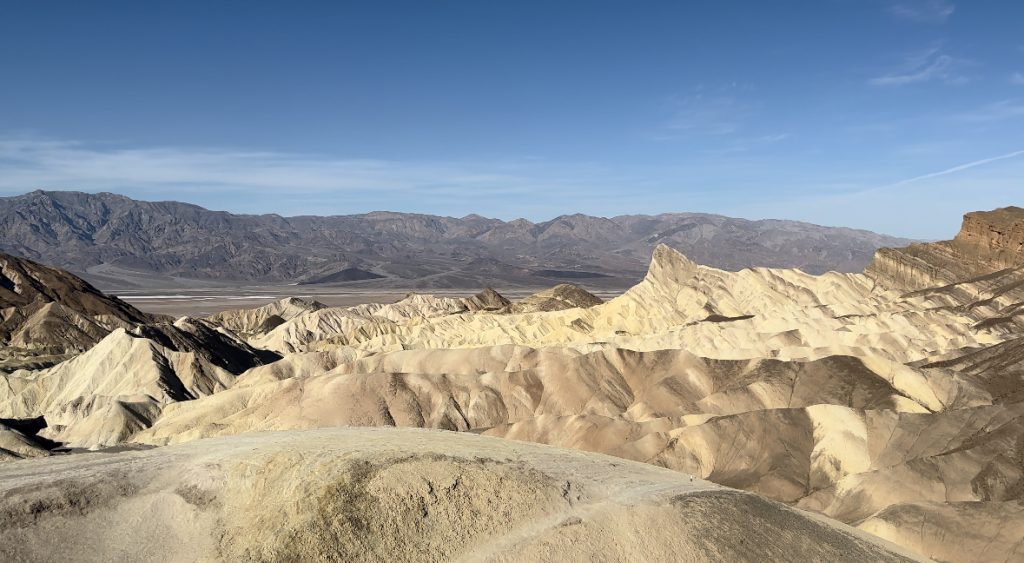
Incredible Erosion
Zabriskie Point is one of the most iconic locations in Death Valley National Park. The incredible erosion that has taken place over millions of years has left behind a stunning landscape that is truly a sight to behold. This location gets its name from Christian Zabriskie, who was involved in mining activities in the area during the early 1900s.
Looking out from Zabriskie Point, visitors can see an impressive display of badlands and canyons that have been carved out of the earth by wind and water. The rocks are layered with different colors, ranging from white to pink to red, and offer a unique perspective into the geological history of this region.
Spectacular Sunrise and Sunset Views
One of the best times to visit Zabriskie Point is during sunrise or sunset when the sky transforms into a palette of oranges, pinks, and purples. The soft light brings out new details in the rock formations that cannot be seen during other times of day.
It’s no wonder why photographers flock to this location for breathtaking shots. To capture amazing photos at Zabriskie Point, it’s recommended to arrive early or stay late to avoid crowds.
Bring along a tripod and experiment with different camera settings for optimal results. Don’t forget to take time away from your camera lens as well – sit back and enjoy this incredible view.
Zabriskie Point is just one example of why Death Valley National Park is such an incredible place for both hikers and non-hikers alike. With so many unique locations like this one waiting to be explored, there’s no excuse not to experience all that this park has to offer.
Devil’s Golf Course
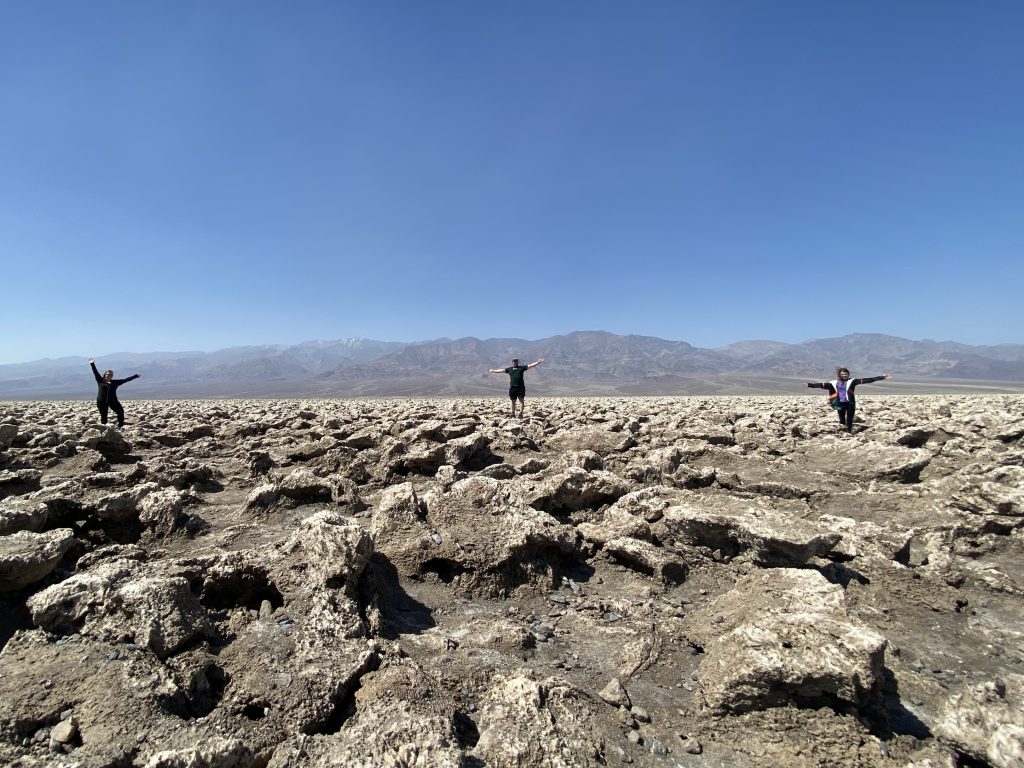
The Devil’s Own Playground
The Devil’s Golf Course is one of the most unique and awe-inspiring locations in Death Valley National Park. This place is not for the faint-hearted as the jagged and rough terrain can be treacherous to navigate, but it is definitely worth the effort to experience this otherworldly landscape.
The salt formations that resemble a golf course from afar are part of what makes this location so fascinating, but it’s the eerie silence and barrenness that truly captivates. With its twisted salt spires and razor-sharp terrain, this spot emulates something out of a science fiction movie.
It is not a place for flip-flops or sandals – visitors should be prepared to wear sturdy shoes with good grip as they traverse through cragged edges and hard-packed earth. It is worth noting that visitors should take extreme caution while walking around the area – one wrong step could lead to nasty cuts or bruises.
Proceed with Careful Steps
As beautiful as it may look, getting too close to these formations can be dangerous for both humans and wildlife. The sharp edges of the salt formations can easily cut skin or cause injury if fallen upon. Visitors should also avoid touching any of these formations as they are fragile structures that have taken centuries to form.
It is always recommended to keep on designated paths when visiting national parks, especially at places like Devil’s Golf Course where there are no formal trails available. Before visiting, make sure to check weather conditions beforehand since hot temperatures can make outdoor activity in Death Valley dangerous during summer months.
From the stunning Mesquite Flat Sand Dunes to the otherworldly Badwater Basin, visitors can experience all that Death Valley has to offer without ever having to hike. We encourage every visitor to take advantage of these no-hike locations and discover the unique beauty of Death Valley National Park. Happy Hiking
